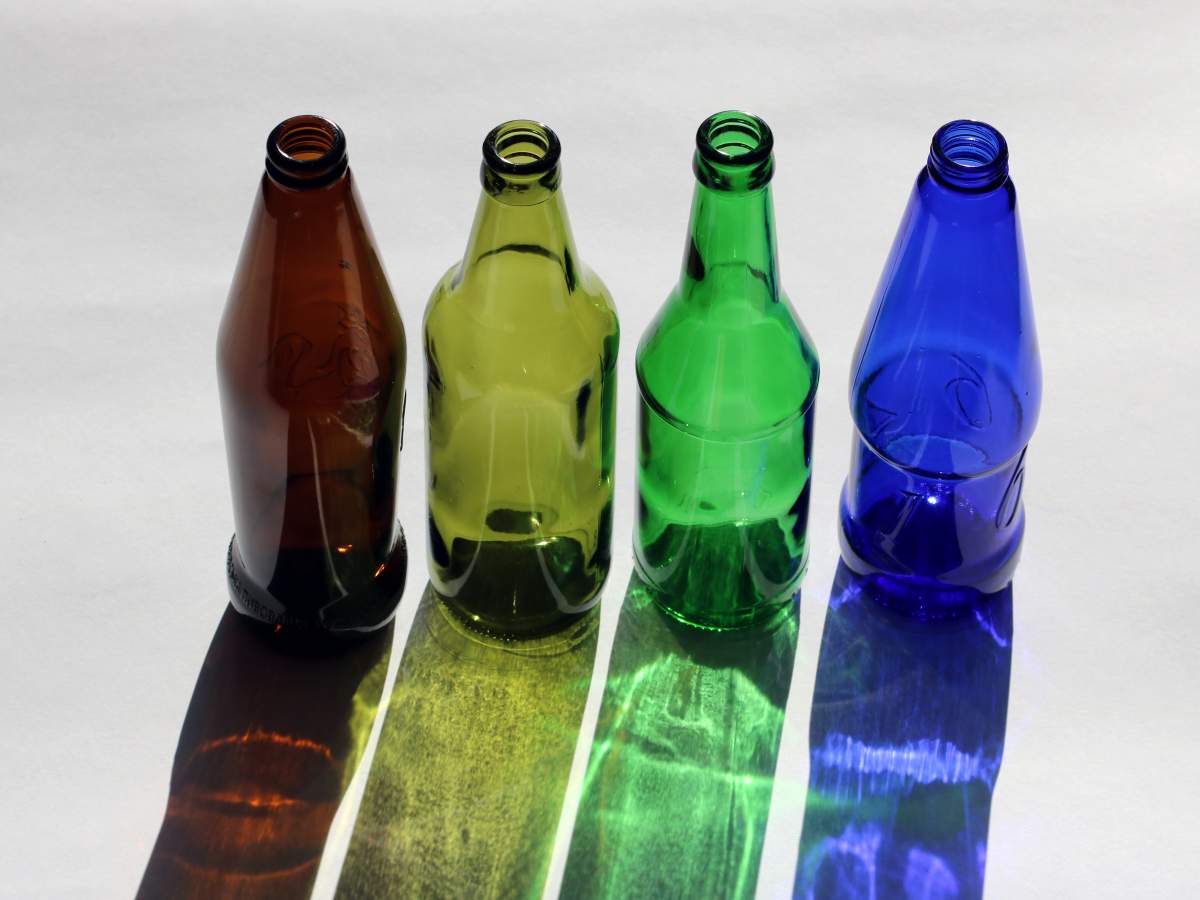
The other day I was at the recycling center sorting glass between containers by color. I thought then that if the color of the bottles was significant enough to control how they‘re recycled, then surely the color was more than cosmetic. So, what is the reason that, for example, wine bottles are olive-green and beer bottles are amber? And why do we separate these items from colorless ones?
The answer has to do with light. Contents in bottles are vulnerable to photochemical reactions. Take beer as an example: if the light-sensitive hops that act as a preservative, and give the drink flavor, are exposed to too much natural or artificial light, the beer will be "light struck," and it will take on a skunky, foul taste.
Beer manufacturers use amber glass to prevent light absorption and provide the most protection against ultraviolet rays, which can ruin a bottled brew.
Olive-green glass offers less protection than amber. But that‘s acceptable because contents stored in green glass are able to withstand light exposure without their flavors being ruined. Wine, for example, naturally contains antioxidants--which, you guessed it, prevent the oxidation liable of wines over-exposed to light. On that subject, beware of that orangish Chardonnay sitting on the top shelf at the grocery; ultraviolet radiation has likely spoiled it.
Then, there is colorless glass, best for alcohols and other liquids that aren‘t light-sensitive.
All colors of glass are produced by the addition of oxide colorants in manufacturing furnaces. And by separating colored and colorless glass, we ensure that manufacturers can use recycled material to make new, perfectly protective containers for any sensitive food or drink.









